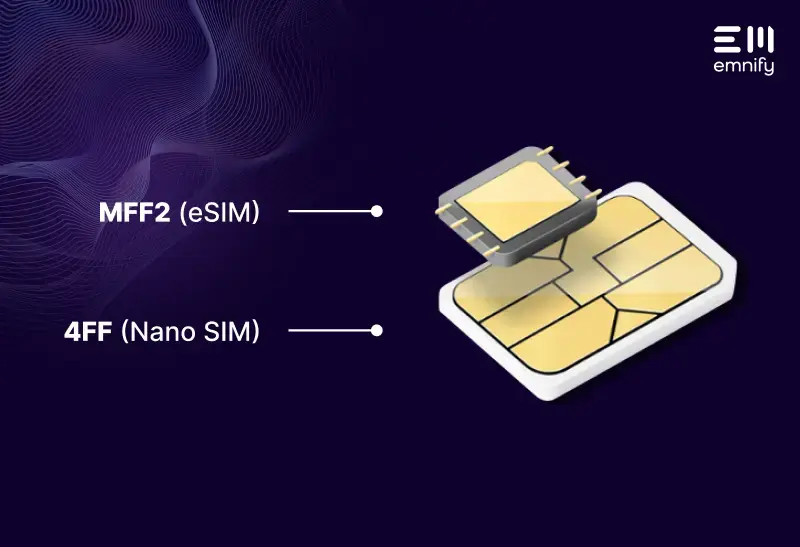

In this blog post we will discuss what is the difference between a regular smartphone SIM and one made for IoT/enterprise use cases and how using made-for-enterprise SIMs can save your business time and money.
The key difference lies in functionality and manageability – the regular smartphone SIM card just provides connectivity and does not include the additional functionality offered by IoT connectivity providers. These enterprise-oriented functions make it simpler to scale your business.
1. Coverage, cost and contracts
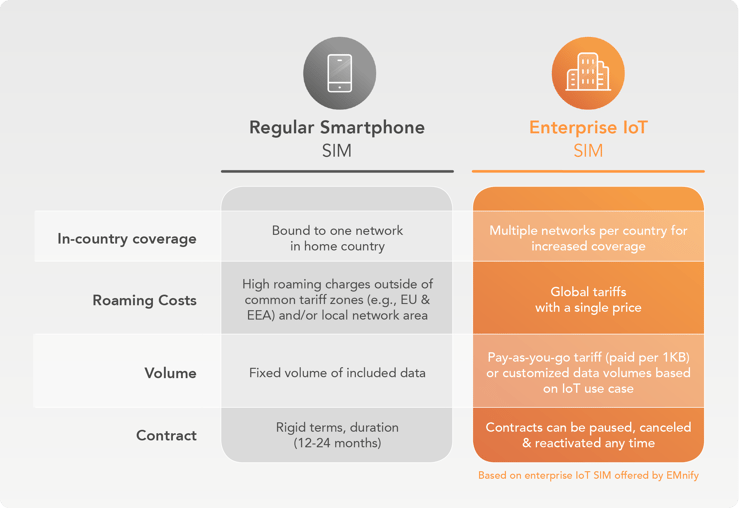
Regular smartphone SIMs have contract terms that are bound to one local network, with differing terms and rates across foreign networks. This has several implications for businesses, which include:
- Tedious sourcing and managing of different connectivity providers on a per-country basis, with their respective contracts and bills.
- Complex inventory logistics to ensure devices are shipped with the right SIM to the right destination.
- High roaming charges that apply when devices are deployed in different countries or move across borders.
- Rigid terms predetermined by network operators (including contract periods, usage volume, pricing and packages, and billing periods). Changing contract terms, depending on the aspect, can be difficult or outright impossible.
This is when IoT SIMs come into the picture with enterprise-focused features and operators behind them. Unlike regular smartphone SIMs that are hard to manage at scale, expensive and complex to deploy across many regions, and come with inflexible terms, IoT SIMs are the opposite and open up possibilities such as:
- Contract terms that accommodate your specific business needs (such as usage volume, billing date, and more)
- Flexibility to pause, resume and cancel a SIM card subscription, as well as ability to change terms associated with it.
- Availability of pay-as-you-go tariffs for additional pricing flexibility.
- a single SIM allows access to multiple local networks. This gives better coverage within the country since the SIM can now switch between networks, prioritizing the best available one.
The ideal network operator of the IoT SIMs would also have arrangements in place for pricing across countries and networks, eliminating the need for using and switching between multiple SIM cards.
2. Access and security
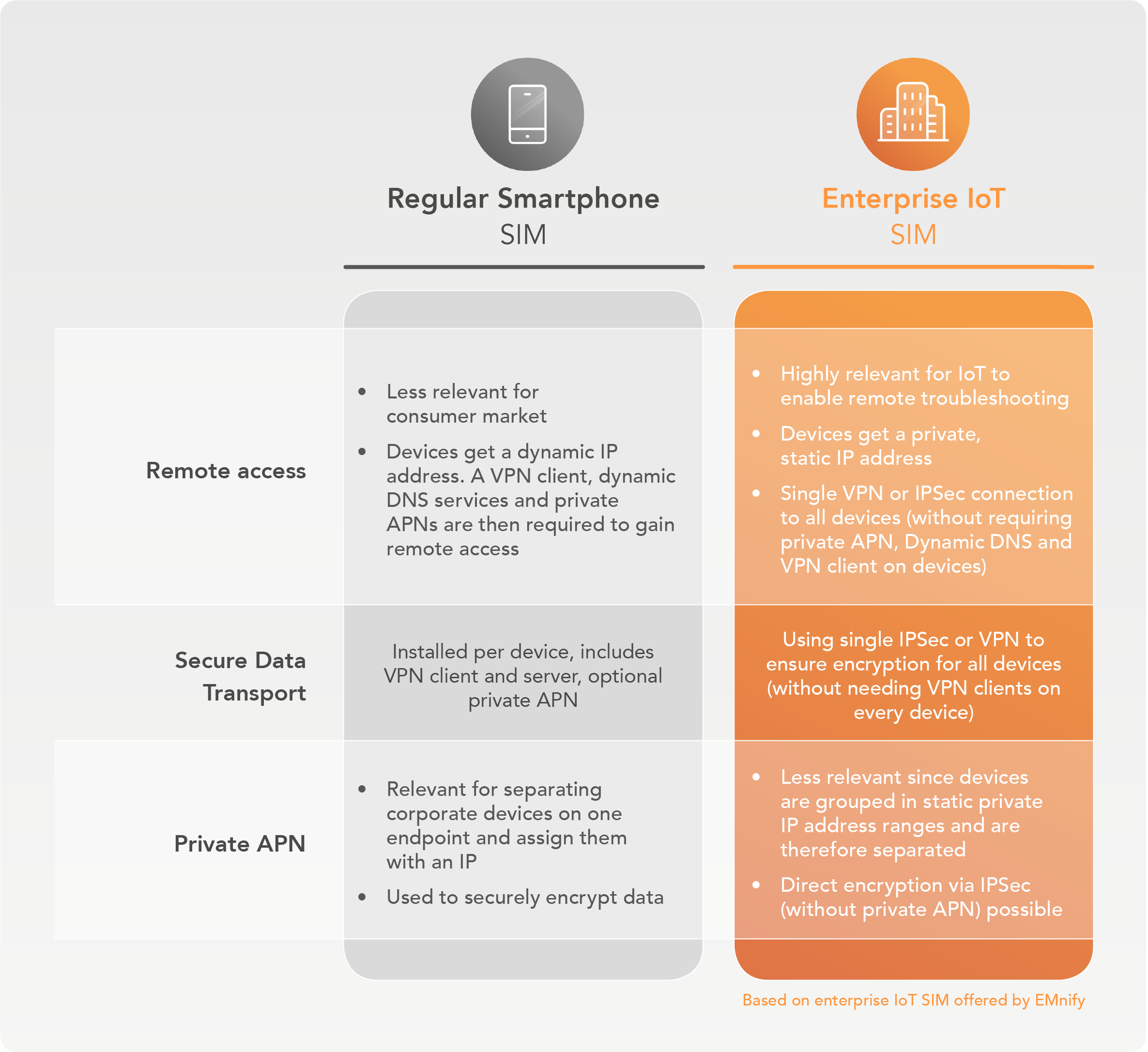
Regular SIM cards assign dynamic IP addresses to the device that change each time a device establishes a data connection. Only corporate users that have additional remote access and management requirements have purchased private APNs with static IPs and IPsec connection to their corporate network.
In IoT use cases the use of private static IP addresses in combination with a VPN is best practice - they allow the device to be access remotely when they are deployed in the field. The service personell can login to the device when it is deployed in the field and execute commands, analyze log files or change configurations.
3. Management, control and transparency
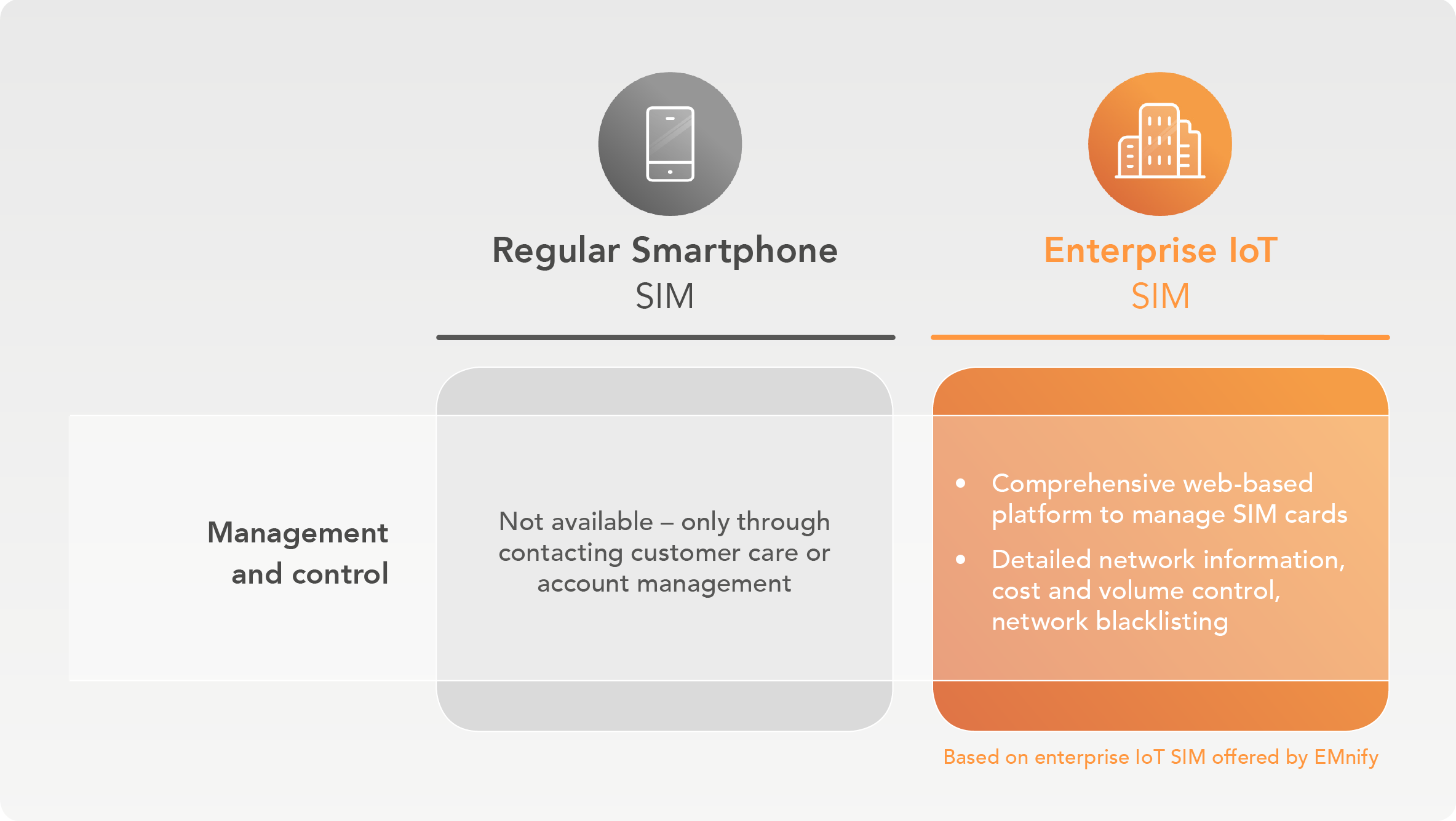
Unlike smartphones, many IoT devices don't have user interfaces for settings, network status, data usage and other information – some may not even have screens at all. Network operators need to supply customers with such insights (ideally in real-time) on connected network, data volume used and costs associated with each device; plus the ability to manage those options and more.
Such management and control are crucial in many situations. For example:
- You may want to specify a data usage limit to remove the risk of a misbehaving device from using excessive data and racking up charges.
- Perhaps some of your devices are only actively used during certain periods of the year and you want the ability to temporarily disable connections for security and cost reasons.
Such a connectivity management portal would only be available with business-focused network operators. Using regular SIMs aimed at smartphones and consumer devices typically omits such functionality, since there is no need for their associated providers to provide management platforms to the average user base.
4. SIM form factors and durability
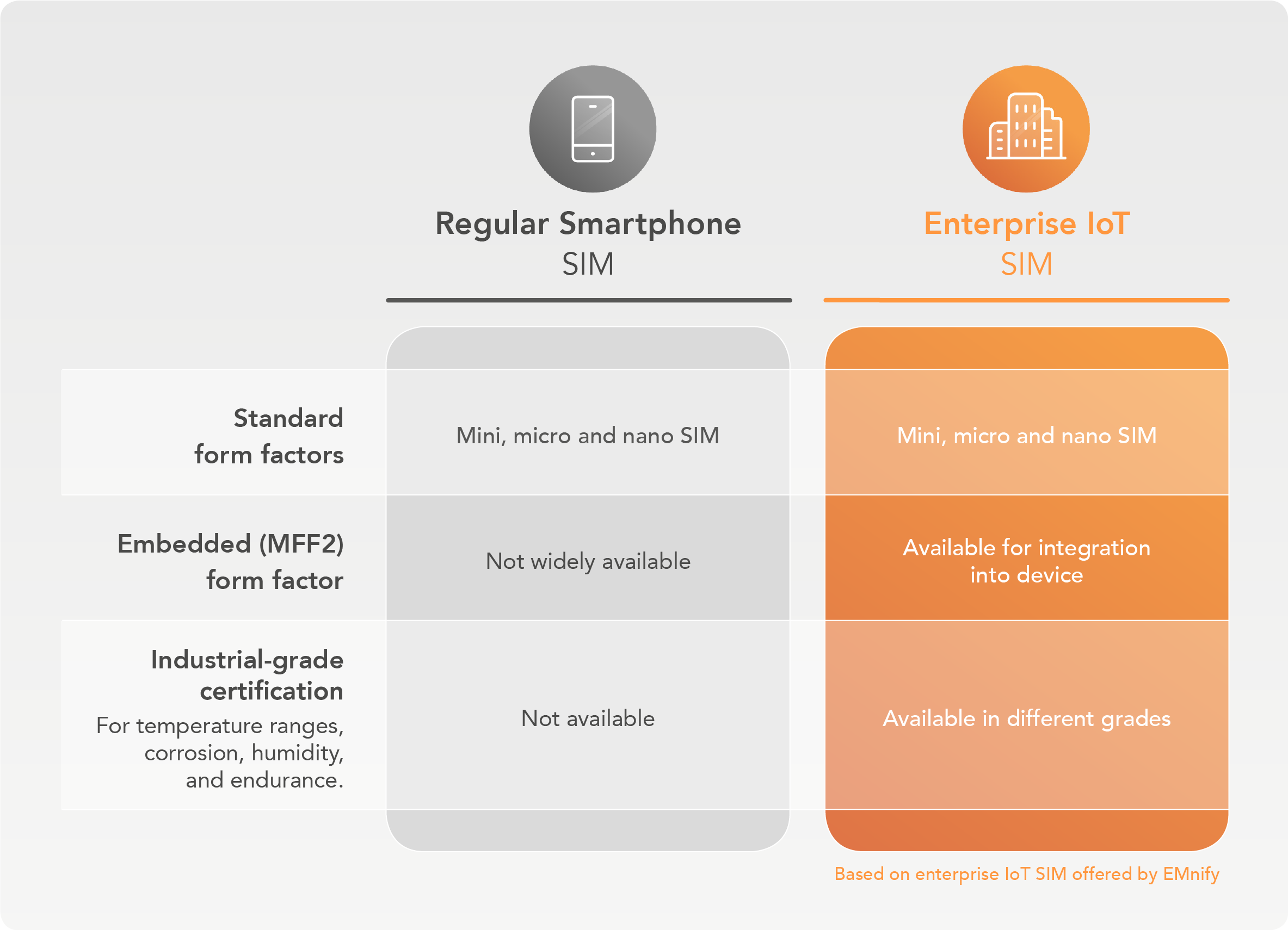
Both regular and IoT SIMs share the mini, micro and nano form factors that we're all familiar with. However, IoT SIMs are also available as MFF2 embedded SIMs that are smaller and can be soldered onto a device. This opens the door for a wider range of use cases and device design.
IoT SIMs, unlike regular SIMs designed for consumer use, are also available with more durable construction. Industrial-grade SIMs are slightly thicker and certified to be resilient versus the elements. These SIMs are highly suitable for devices deployed in harsh environments, where they could be subjected to high and volatile temperatures, humidity, and chemical exposure.
5. Low-power technology and other features for IoT
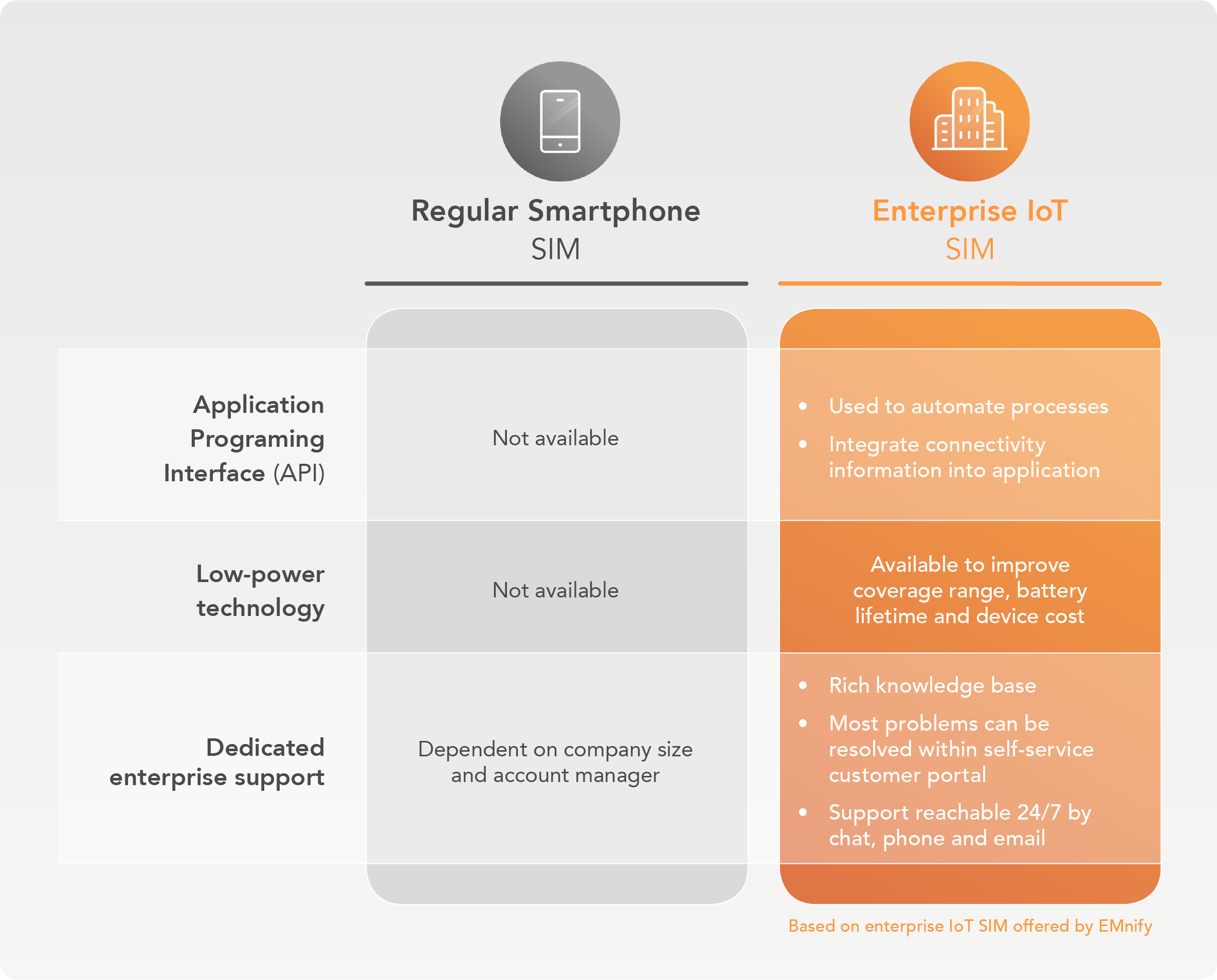
Consumer smartphones and mobile devices are optimized for throughput, to reduce loading times and improve user experience. IoT devices aren't just about throughput – support for the latest technologies is crucial to maximizing efficiency, reliability and time between hardware upgrades. This is especially important if devices are deployed where accessibility and maintenance are limited.
Cellular Low Power Wide Area Network (LPWAN) is the latest technology that provides energy efficiency, coverage and costs advantages. While other operators require special SIM cards to use these technologies, forward-thinking network operators, such as emnify, fully support CAT-1 and CAT-M from the get-go.
There are also two enterprise-oriented features that are highly necessary but are not offered by consumer SIM/network providers with their non-business plans. Those are:
- APIs allowing for integration of SIM management capabilities and providing information availability to your application. This will be a huge boon to productivity and efficiency. In addition, good API framework and documentation can make your developers happier and more efficient since they will be able to perform said integration more quickly and maintain it better.
- Dedicated enterprise customer support that takes away waiting time and uncertainty for customers, and offers them expertise and swiftness in helping them get started or resolve problems. Enterprise customer support is also typically reachable via multiple channels (such as telephone, email and live chat) and available around the clock to resolve any mission-critical issues that may crop up at unexpected times.
Conclusion
To run an efficient, scalable business, it’s important to understand the need for enterprise-oriented SIM cards. The additional functionality and capabilities offered by them over consumer SIM cards enable you to consolidate management of devices to reduce costs, maintain security and reliability of data transmission and send your devices far and wide in confidence.
emnify is one such provider that delivers feature-rich, enterprise-first IoT SIM cards, and comes complete with a fully-fledged platform for managing our SIMs in your deployed devices.
Get in touch with our IoT experts
Discover how emnify can help you grow your business and talk to one of our IoT consultants today!

Christian Henke
If you want to understand how emnify customers are using the platform Christian has the insights. With a clear vision to build the most reliable and secure cellular network that can be controlled by IoT businesses Christian is leading the emnify product network team.


